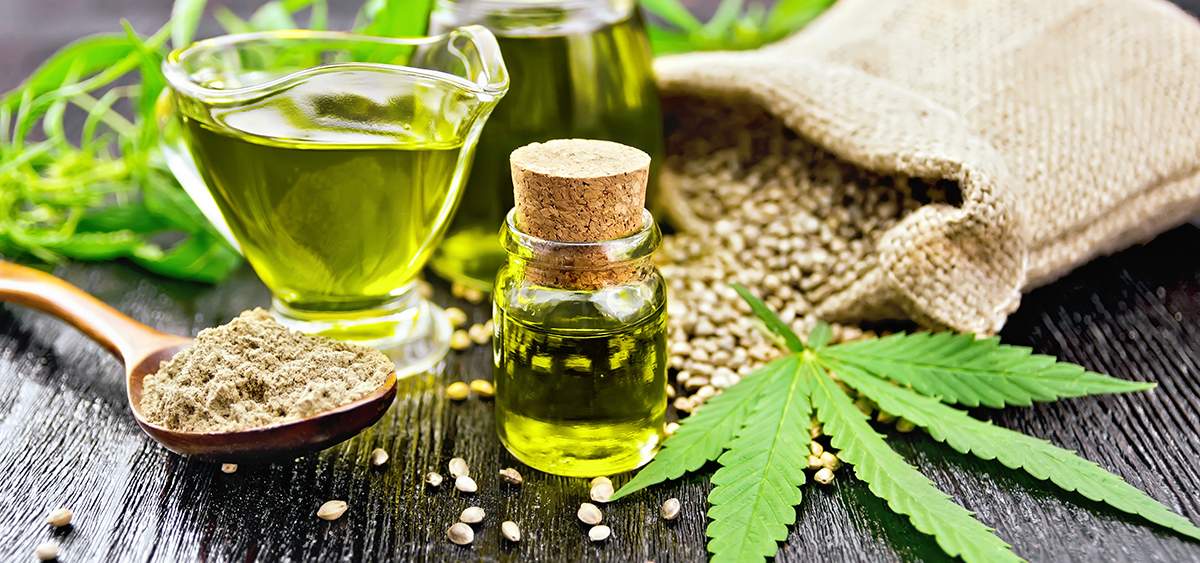Plant medicine has been practiced for centuries by people in every area of the world, used to treat acute and chronic conditions, support overall wellness, and as a religious and cultural practice. If you are newly dipping your toes into medicinal herbs, you will likely have already discovered your options are virtually endless. Indeed, which can make narrowing it down a difficult task. In this simple guide, we will demystify some of the basics of medicinal herbs by sharing five of the most beneficial plants for supporting daily health and wellness.
What are Medicinal Herbs & Plants
Since ancient times, people have been using medicinal herbs – long before we began writing down remedies and mass-producing pharmaceuticals. It was a time when families were passing down traditional methods of healing generation after generation. As such, medicinal herbs and plant-based medicines are varieties of what is known as flora. Flora is known to support human health and wellness. Some medicinal plants and herbs are only medicinal in part; for example, the plant’s roots. In comparison, specific plants contain therapeutic benefits and remedies in their entirety.
While most plants – like fruits, vegetables, and greens – hold nutritional value, one must not categorize all as medicinal. For instance, an apple is rich in fiber and vitamin C, two essential nutrients for healthy digestion and general health. But, an apple tree is not a medicinal plant, nor is the apple itself since it doesn’t have the necessary compounds to treat specific ailments.
On the other hand, garlic contains more than 200 chemical ingredients, proving to effectively prevent cardiovascular disease and related ailments. Garlic acts as an antibacterial and antifungal treatment, an antioxidant, and an immune booster. It even contains antitumoral properties, proving an effective treatment against specific cancer cells. Most medicinal plants are distinguished according to their high concentration of disease-fighting chemicals (phytochemicals): alkaloids, flavonoids, polysaccharides, terpenes, tannins, and more.
Essential Medicinal Plants & Herbs
While there are thousands of medicinal plants and herbs in existence, there is no need to worry about trying them all. Many plants contain similar compounds and offer the same benefits, so it is all about finding the right ones for you. While it ultimately comes down to personal preference, some medicinal herbs are widely considered essential for any herbalist’s medicine cabinet. Here are five amazing plant medicines to support daily health and wellbeing:
Turmeric
Turmeric, a member of the same plant family as ginger, is native to India and other Southeast Asia areas where it became a key ingredient in Ayurvedic medicine. Turmeric root possesses a beautiful deep golden hue, making it useful for dying cloth. A slightly bitter and aromatic flavor makes it delicious in various East Asian, Middle Eastern, and Mediterranean dishes.
As a medicinal herb, turmeric root is used to reduce inflammation, boost liver function, fight infection, and aid in healthy digestion. Specifically, many individuals use turmeric root to combat conditions like urinary tract infections, rheumatoid arthritis, menstrual cramping, loss of appetite, gastrointestinal distress, and various other ailments. To further enhance the anti-inflammatory effects of turmeric root, combine it with the power of CBD. Turmeric CBD oil can be taken on its own, added to a meal, or mixed in with a cup of tea, a smoothie, or a simple glass of water.
Ashwagandha
Ashwagandha is a nightshade plant – like tomatoes and eggplants – native to India, China, Nepal, and Yemen. Small burnt-orange fruits with dull green leaves, ashwagandha is primarily used for its roots. The ashwagandha roots have a distinctly horse-like odor, giving the plant its name, which derives from the Sanskrit ashva (horse) and gandha (smell).
Individuals who practice traditional Ayurvedic medicine commonly use ashwagandha roots to create a remedial tonic. The ashwagandha roots offer diuretic properties to cleanse your body of toxins while reducing inflammation in the joints, stomach, intestines, and muscles. Also regarded as a stimulant, individuals can also take ashwagandha to improve memory, reduce the effects of neurological diseases, and treat stress.
To reduce stress at the end of a long day and to prepare yourself for a night of restful sleep, trying making ashwagandha infused Moon Milk:
- Warm 8 oz. milk of your choice in a small saucepan until just simmering
- Whisk ½ tsp. powdered ashwagandha root, ½ tsp. cinnamon, and ¼ tsp. ginger into the warm milk until combined
- Add 1 tsp. coconut oil plus 1 tsp. of your favorite natural sweetener (like honey, agave, or maple syrup), pour the mixture into a mug, and enjoy!
Hemp CBD
Hemp, like marijuana, is a variety of cannabis plants originally native to Central Asia before spreading throughout Europe, the Middle East, and the Americas. Unlike marijuana, hemp does not contain the psychoactive compound “THC.” When one consumes hemp – or CBD – they will not feel the typical ‘high’ and psychoactive effect of weed. Instead, hemp is rich in a different cannabinoid known as CBD. Its scientific name is cannabidiol. CBD is known for the myriad of health benefits it has to offer, including anti-inflammatory, pain-reducing, anxiety-reducing, anti-tumor, and neuroprotective properties. Hemp CBD has even been used to alleviate the symptoms of debilitating epilepsy, MS, rheumatoid arthritis, and other physically limiting conditions.
Further, hemp can be taken in various consumption methods. For example, CBD can come in a pill form, edible, oil or tincture, or even a topical like body lotion. No matter how you use the herb, be sure to source yours from a trusted CBD company whose ingredients you can trust.
As such, the most compelling evidence of direct sourcing is Mana Botanic’s full line of Hawaiin CBD products containing Hawaiin-grown hemp. Not only does Mana Botanic harvest their product using forward-thinking ethical practices, but they also formulate the products to have the ultimate bioavailability. Ultimately, allowing you to enjoy all of the potent effects and therapeutic benefits of CBD for a shyer price.
Tulsi
While belonging to the same family as the basil plant, tulsi is a small, fragrant bush. Centuries ago, people were predominantly using tulsi in Ayurvedic medicine. Sometimes called ‘holy basil,’ tulsi is commonly used as a culinary herb, favored for its bright and peppery taste.
Tulsi’s primary purpose is to promote balance in the body, reduce blood pressure, prevent inflammation, normalize blood glucose levels, and even protect vital organs from free-radicals in the body. Tulsi also contains several other beneficial compounds, including terpenes to reduce pain, flavonoids to flush out toxins, and vital compounds to promote mental health and wellbeing.
Most commonly, tulsi is taken as a tea to reduce stress and address inflammation. To make your own tulsi tea, one can brew dried tulsi leaves in hot water with other medicinal herbs like chamomile and enjoy hot or cold.
Comfrey
Native to parts of Asia and Eastern Europe, the comfrey plant is commonly kept as a decorative plant thanks to its beautiful bell-shaped flowers and deep green leaves. Underground and beneath the thick foliage, comfrey roots are large, long, and tuberous, appearing deep brown on the outside and snow-white on the inside. The first accounts of comfrey as a medicinal herb come from ancient Greece and Rome, where the plant was used to treat bruising and sprains.
After more than 2,000 years of use, comfrey remains a popular herbal medicine used by people today to increase healing, reduce pain, treat scarring, and stimulate cellular regeneration. When used to treat acute pain or wounds, comfrey has proven effective in increasing the healing rate while reducing overall pain and discomfort.
When applied topically, comfrey can treat muscle, nerve, and joint pain, increase blood flow to the area for rapid healing and eliminate lingering discomfort. Simply spread an herbal hemp balm infused with comfrey onto the affected area, and you’ll experience sweet relief in minutes.
Final Thoughts
While knowledge of medicinal herbs has been passed down for centuries, you don’t need to be a master herbalist to enjoy plant medicine benefits. Plant medicine is for everyone. In light of a renewed interest by consumers in natural remedies, plenty of products are available today that can help you discover which medicinal herbs will work for you.
Medical Disclaimer:
The information provided in these blog posts is intended for general informational and educational purposes only. It is not a substitute for professional medical advice, diagnosis, or treatment. Always seek the advice of your physician or other qualified healthcare provider with any questions you may have regarding a medical condition. The use of any information provided in these blog posts is solely at your own risk. The authors and the website do not recommend or endorse any specific products, treatments, or procedures mentioned. Reliance on any information in these blog posts is solely at your own discretion.







